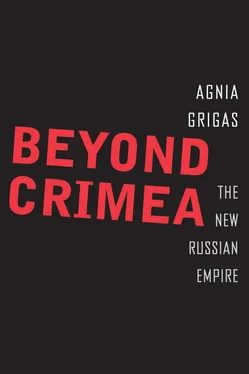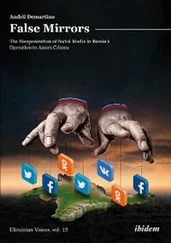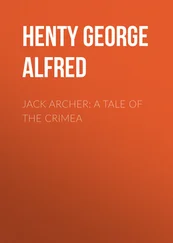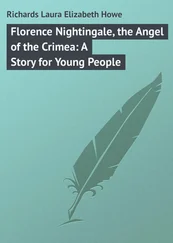This chapter has also demonstrated that Russian compatriot policies cannot be viewed in isolation. Compatriots are not only part of Russian humanitarian outreach programs, but rather are enshrined in Russia’s national laws and linguistic, cultural, and information programs. Furthermore, compatriots are part of the basic foundations of the Russian state: in national security strategies, foreign policy concepts, and definitions of citizenship. Finally, compatriot policies should not be viewed as a reflection of certain times or leaderships. Just as Yeltsin inherited the compatriot issue from the debris of the Soviet Union’s dissolution and Stalin’s ethnic policies, so too will the compatriot issue persist long after Putin retires from power. Russian compatriots will remain relevant to Europe and Eurasia in the decades to come, regardless of the leadership in the Kremlin. As I argued in the previous chapter, Russian compatriots serve a key role in the reimperialization trajectory, which aims to maintain neo-imperial influence over and regain territory in the former Soviet republics. The following four case study chapters will demonstrate how and to what extent these compatriot policies and the reimperialization trajectory have been enacted in Ukraine, Georgia, Moldova, the Baltic States, and Central Asia, as well as Belarus and Armenia.
CHAPTER FOUR
Separatism and Annexation
MOLDOVA, GEORGIA, AND UKRAINE
The most obvious risk was that the Russian-speaking population was threatened and that the threats were absolutely specific and tangible. This is what made Crimean residents, the people who live there, think about their future and ask Russia for help.
—Vladimir Putin, 17 April 2014
AT FIRST GLANCE, the three former Soviet republics of Moldova, Ukraine, and Georgia appear to have little in common. Moldova is a small country of just four million people, sandwiched between Ukraine and Romania. Despite its historical, cultural, and linguistic ties to EU and NATO member Romania, Moldova has been a forgotten corner of Europe since the Soviet Union’s disintegration. Neighboring Ukraine is a juggernaut in comparison. Ukraine’s landmass makes it the largest country entirely within Europe, and its population of approximately 43 million is also substantial. 1Often called the breadbasket of Europe, the country has been a prize that neighboring powers such as Poland, Lithuania, the Crimean Khanate, the Ottomans, and Russia have jostled over for hundreds of years. As fellow Slavs, Russians consistently perceive the Ukrainians as a “brother-nation,” inherently related to themselves. Across the Black Sea from Ukraine, nestled in the Caucasus Mountains, is the country of Georgia. The Georgians, or Kartvelians, number just 5 million people today, and, as part of their distinct position at the crossroads of Eastern Europe and Western Asia, possess a unique alphabet, language, and identity.
Yet these distinct countries possess some striking similarities. All three have had a long and difficult history with imperial and Soviet Russia, facing aggressive Russification and deportation policies. A sizable proportion of the population of all three states belongs to the Eastern Orthodox Church, a feature in common with Russia. All have struggled with corrupt regimes and remain among the poorest countries in Europe with an annual GDP per capita of less than $4,000. Partly as a result, all three have experienced “colored” revolutions, civil movements seeking change in the government and a turn to the West: Georgia’s Rose Revolution in 2003, Ukraine’s Orange Revolution in 2004, and Moldova’s Grape or Twitter Revolution in 2009. And they were the three top performers within the EU’s Eastern Partnership Initiative since it was launched in 2009. 2
Perhaps the most significant commonality shared by Moldova, Georgia, and Ukraine is the clarity with which their recent histories reveal the trajectory of Russian reimperialization. Equally striking is the similarity with which Russian policies (particularly passportization, information warfare, and calls for protection) have been enacted in these three states at different time periods. Indeed, while the 2014 annexation of Crimea came as a shock to most, many of the same processes of compatriot passportization and calls for their protection had been ongoing since the early 1990s in all three states. On Moldova’s eastern border, Transnistria has been an internationally unrecognized breakaway territory bolstered by Russia since the 1990s. Moscow has been stoking separatism in Georgia’s Abkhazia and South Ossetia since the 1980s and has turned these territories into puppet states since the Russo-Georgian war in 2008. The groundwork of Crimea’s annexation and separatism in eastern Ukraine’s two newly minted “people’s republics”—the People’s Republic of Luhansk and the People’s Republic of Donetsk—has been laid over the last decades. In 2015, both of these “people’s republics” increasingly look likely to turn into frozen-conflict zones like Transnistria, Abkhazia, and South Ossetia. As Georgia’s president from 2004 to 2013, Mikheil Saakashvili, wrote in the Washington Post as the crisis in Ukraine was unfolding in March 2014, “there are striking similarities between the early stages of Russian aggression against Georgia and what is happening in Ukraine.” 3The current Georgian President Giorgi Margvelashvili reiterated this, stating that “What happened in 2008 unfortunately also echoed in 2014 in Crimea, Donetsk, Luhansk and Mariupol.” 4Indeed, Russia’s reimperialization trajectory has been almost identical in Ukraine, Georgia, and Moldova.

MAP 2. Distribution of Russian speakers and disputed territories across Belarus, Ukraine, and Moldova. Map drawn by Giedrė Tamašauskaitė

MAP 3: Distribution of Russian speakers and disputed territories across the Caucasus. Map drawn by Giedrė Tamašauskaitė
There are also important distinctions in the way Russian reimperialization efforts have been pursued in Ukraine, Georgia, and Moldova. Since the Transnistrian conflict of 1991 until the annexation of Crimea in 2014, there have been notable changes in Russia, its leadership, and its policies, as well as in the geopolitical context of Europe—all of which have colored the developments in the countries concerned. Russia’s participation in the Transnistrian conflict was partly a reflex response of the old Soviet empire (and Soviet troops on the ground) to a (from their point of view) advantageous course of events. The Russo-Georgian war of 2008 was a successful trial experiment in reimperialization by Putin’s regime, in no small part because it garnered little response from the West. Crimea’s annexation and the war in eastern Ukraine appear as a culmination of these measures that have been methodically and systematically pursued by the Kremlin since the 2000s. In all three countries—in Moldova’s Transnistria, in Georgia’s South Ossetia and Abkhazia, and in Ukraine’s Crimea and eastern territories—Moscow has consistently evoked the protection of Russian compatriots as reasons for its involvement and military operations. Before outlining Russia’s policy in the three states, however, it is helpful to place them geographically (see Maps 2 and 3) and start with a brief overview of their Russian compatriot populations, their historical ties to Russia, and the background to conflict.
Читать дальше














